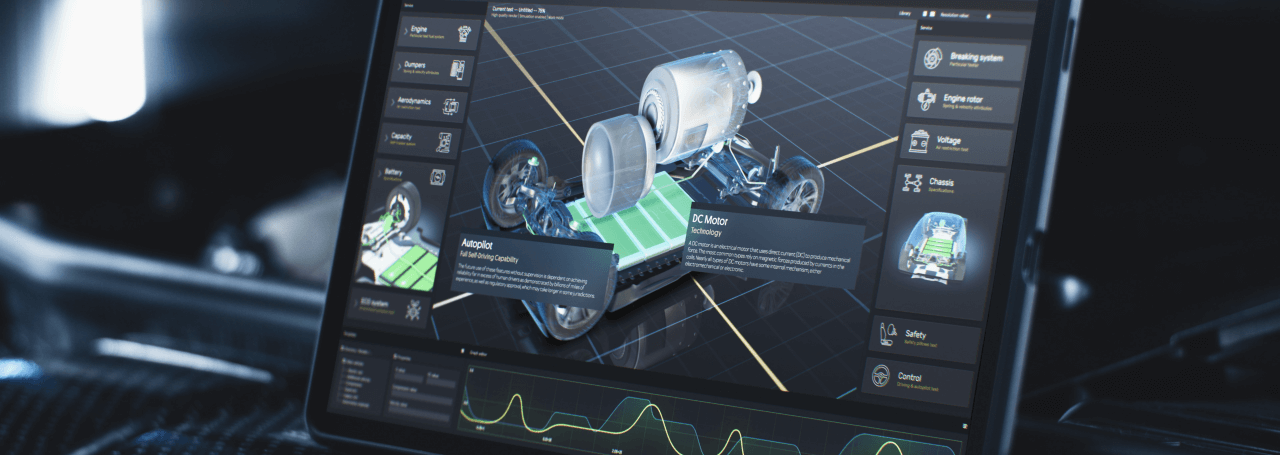OLED, or Organic Light-Emitting Diode, is a type of electroluminescent organic diode. Unlike conventional LCD screens, which require a separate backlight source, each OLED pixel emits its own light. This fundamental difference has revolutionized screen design, enabling deep blacks, exceptional contrast, and new application possibilities.
How does OLED work?
A single OLED pixel is a multi-layered semiconductor structure. Its key components include:
- Anode – a transparent positive electrode (most often made from indium tin oxide) that introduces “holes” (missing electrons with a positive charge) into the organic layers.
- Cathode – a negative electrode (often aluminum or other metals) that supplies electrons.
- Emissive Layer (EML) – the area where charge carriers recombine and light is emitted.
- Transport Layers – the HTL (hole transport layer) and ETL (electron transport layer) that facilitate the migration of charges toward the EML.
When a voltage is applied, the anode attracts electrons from the organic layers (creating holes) while the cathode injects electrons. When these charges meet in the emissive layer, they recombine. This process releases energy in the form of a photon. The emitted light’s wavelength—and therefore its color—depends on the specific organic material used. This allows for the creation of RGB pixels and a full color spectrum without the need for color filters.
What Is An OLED Screen?
An OLED screen is a matrix of millions of microscopic OLED diodes, each operating independently. This individual control allows for true black (when a pixel is completely off), precise brightness and color adjustments, and high contrast without a backlight.
Depending on their application and construction, passes through RGB filters, which allows for high brightness and color uniformity.
There are many types of OLED displays, but these three are the most commonly used:
- AMOLED (Active Matrix OLED) – used in smartphones, smartwatches, and TVs. Each pixel is individually controlled by a thin-film transistor (TFT), which enables high resolution and fast refresh rates.
- PMOLED (Passive Matrix OLED) – simpler and cheaper to produce, but limited to smaller, lower-resolution screens. They’re often used in IoT devices and wearables.
- WOLED (White OLED) – primarily used in televisions. They emit white light.
What Does OLED Mean?
OLED is an acronym for Organic Light-Emitting Diode.
- Organic means that the light-emitting materials are carbon-based compounds.
- Light-Emitting refers to the materials’ ability to emit light when current flows through them.
- Diode indicates that the device functions as a semiconductor, allowing current to flow in only one direction.
What are the advantages of OLED displays?
OLED technology offers several key benefits.
- Perfect contrast and deep blacks – with no light emitted from an off-pixel, the result is perfect black and stunning image clarity.
- Ultra-thin design – the lack of a backlight allows for panels just a few millimeters thick, which can even be flexible or transparent.
- Fast response time – response times in the microsecond range eliminate motion blur, which is crucial for dynamic applications like gaming and VR.
- Wide viewing angles – contrast and color saturation don’t degrade, even at large viewing angles.
- High color reproduction quality – OLED can achieve a very wide color gamut (e.g., DCI-P3, Rec. 2020).
What are some drawbacks of OLED displays?
Like any technology, OLED has its drawbacks.
- Burn-in – prolonged display of static elements (e.g., logos, on-screen graphics) can cause permanent discoloration. Manufacturers are implementing compensation algorithms and new materials (like TADF, Thermally Activated Delayed Fluorescence) to mitigate this effect.
- Higher production costs – this is especially true for large-format and complex displays.
- Susceptibility to external factors – organic compounds can degrade when exposed to moisture and oxygen, which necessitates the use of hermetic barriers. Additionally, inverted OLED architectures are also employed to enhance environmental stability and protect the device layers more effectively.
- Uneven color degradation – blue OLEDs have a shorter lifespan than red and green ones, which can lead to a color shift over time.
| Pros | Cons |
| Perfect blacks & contrast | Burn-in from static elements |
| Ultra-thin & flexible design | High production costs |
| Instant response time | Sensitive to moisture & oxygen – needs sealing |
| Wide viewing angles | Blue pixel degradation → color shift over time |
| Wide color gamut |
OLED for industrial applications
While OLED is often associated with consumer electronics, its potential is much broader. In industrial settings, it’s effective in applications where compactness, energy efficiency, and high visual quality are essential.
- HMI panels and operator interfaces – OLED displays offer excellent readability, even in low-light conditions, and a wide operating temperature range.
- Medical equipment and wearables – their lightweight, flexible structure allows for integration into wearable devices where traditional displays would be too massive.
- Automotive – OLEDs are increasingly used in dashboards, HUD (Head-Up Displays), and next-generation infotainment systems.
- Dynamic labels and signage – the low power consumption makes OLED suitable for electronic labels in warehouses and logistics centers.
Why OLED works for industry?
- Lower energy consumption – when displaying dark interfaces, power consumption can be significantly lower than with LCDs.
- Optimized visibility – high contrast and a fast response time make OLED interfaces more readable and responsive.
- Ease of integration – thin, lightweight OLED panels enable the design of more compact end-user devices.
Summary
OLED is a technology that combines modern organic materials with advanced semiconductor engineering. It not only delivers exceptional image quality but also opens up new possibilities for designing lightweight, flexible, and energy-efficient devices. Because of these qualities, it’s finding applications in industry, medicine, and automotive sectors in addition to consumer electronics. OLED continues to evolve, and future generations of the technology promise even greater efficiency, durability, and integration with the smart systems of the future.
Looking for the perfect OLED display for your project?
OLED technology offers stunning visuals, but choosing the right module – and using it correctly – is key to long-lasting performance. Contact our engineering team. We’ll help you select the ideal OLED display for your application and share expert tips to maximize its lifespan and image quality.
DISCOVER OUR
Whitepaper
Achieve the perfect user-display interaction with the right Touch Sensor IC. Ever faced issues with phantom touch events or certification? Boost your R&D like a pro with our Whitepaper!




